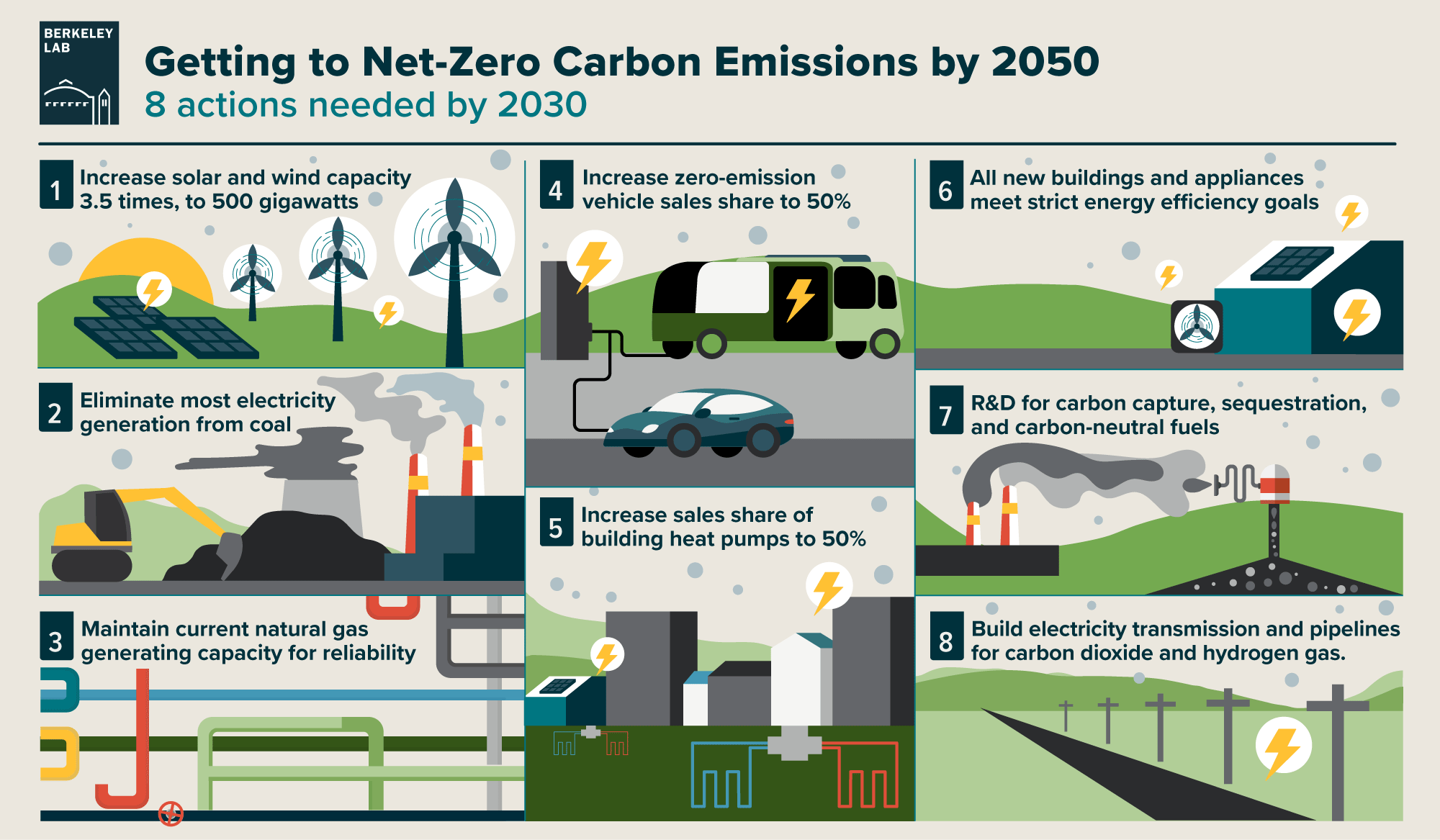
energy infrastructure to run primarily on renewable energy, at a net cost of about $1 per person per day, according to new research published by the Department of Energy’s Lawrence Berkeley National Laboratory (Berkeley Lab), the University of San Francisco (USF), and the consulting firm Evolved Energy Research.
energy and industrial system to produce the first detailed, peer-reviewed study of how to achieve carbon-neutrality by 2050.
According to the Intergovernmental Panel on Climate Change (IPCC), the world must reach zero net CO2 emissions by mid-century in order to limit global warming to 1.5 degrees Celsius and avoid the most dangerous impacts of climate change.
“By methodically increasing energy efficiency, switching to electric technologies, utilizing clean electricity (especially wind and solar power), and deploying a small amount of carbon capture technology, the United States can reach zero emissions,” the authors write in “Carbon Neutral Pathways for the United States,” published recently in the scientific journal AGU Advances.
energy system is fundamentally an infrastructure transformation,” said Berkeley Lab senior scientist Margaret Torn, one of the study’s lead authors.
“It means that by 2050 we need to build many gigawatts of wind and solar power plants, new transmission lines, a fleet of electric cars and light trucks, millions of heat pumps to replace conventional furnaces and water heaters, and more energy-efficient buildings – while continuing to research and innovate new technologies.”.
The pathways studied have net costs ranging from 0.2% to 1.2% of GDP, with higher costs resulting from certain tradeoffs, such as limiting the amount of land given to solar and wind farms.In the lowest-cost pathways, about 90% of electricity generation comes from wind and solar.
can meet all its energy needs with 100% renewable energy (solar, wind, and bioenergy), but it would cost more and require greater land use.
In the least-cost scenario to achieve net zero emissions of CO2 by 2050, wind, solar, and battery storage capacity will have to increase several-fold (left chart).“The main reason is that the cost of wind and solar power and batteries for electric vehicles have declined faster than expected.”.
Costs were calculated using projections for fossil fuel and renewable energy prices from DOE Annual Energy Outlook and the NREL Annual Technology Baseline report.
The cost figures would be lower still if they included the economic and climate benefits of decarbonizing our energy systems.Climate benefits include the avoided impacts of climate change, such as extreme droughts and hurricanes, avoided air and water pollution from fossil fuel combustion, and improved public health.
In the near term, we need to increase generation and transmission of renewable energy, make sure all new infrastructure, such as cars and buildings, are low carbon, and maintain current natural gas capacity for now for reliability.
We don’t need to have a big battle now over questions like the near-term construction of nuclear power plants, because new nuclear is not required in the next ten years to be on a net-zero emissions path.
energy and industrial system can become a source of negative CO2 emissions by mid-century, meaning more carbon dioxide is taken out of the atmosphere than added.
energy and industrial system could be “net negative” to the tune of 500 million metric tons of CO2 removed from the atmosphere each year.
What appears to be missing from the analysis is the ‘cost’ in increased CO2 emissions during the build-out phase resulting from mining, processing, fabricating, and transporting the materials needed to replace existing power sources.
The USA can’t stop Climate Change aloneOnly China, India, etc., can stop climate Change
Changing the selfish behavior of 7 billion people, increasing to 10 billion people, and the politics of 100 Nations to stop climate change would to be a miracle, even Bill Gates has said so
A Malthusian Collapse is far more probable that stopping climate change
